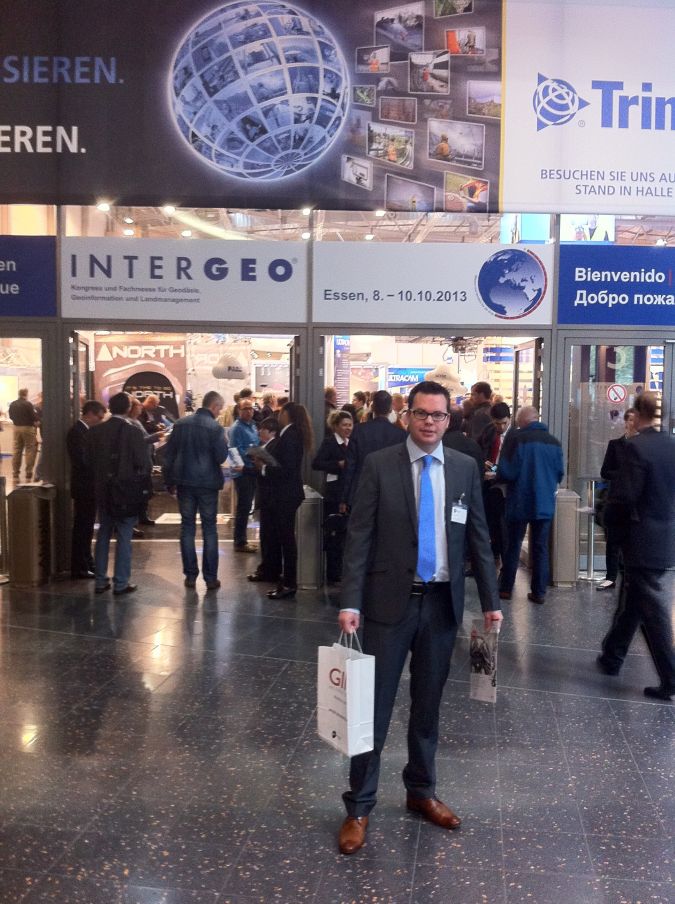As the 25th edition of Intergeo rapidly approaches, Wim van Wegen reflects on his own anniversary: a decade in the geospatial business and attendance at ten consecutive Intergeo events. Huge advancements in 3D mobile laser scanning, unmanned aerial vehicles and total stations are just some examples of the innovative nature of our industry. So what will the future bring?
This year’s edition in Stuttgart marks the 25th anniversary of Intergeo. My own personal Intergeo debut was back in 2010, in the city of Cologne, so this is an anniversary year for me too: it will my 10th time attending the event. In our review in 2010, we wrote: “Many exhibitors offered solutions for mapping and gathering information without annoying pedestrians or causing traffic jams by blocking the road. The number of mobile mapping systems on offer is still increasing, and the combination of systems mounted on a roof rack becoming more and more flexible.” Since then, we have seen those systems evolve into today’s much more sophisticated solutions. For example, the development of algorithms enabling simultaneous localization and mapping (SLAM) has led to mobile laser scanning solutions that are able to provide 3D data from GNSS-denied environments.
But the advancement of mobile mapping has not been limited to the ground only. We have seen unmanned aerial vehicles (UAVs or ‘drones’) take off – both literally and figuratively speaking – as one of the key devices for mapping and surveying. At my debut in 2010, there were just a handful of exhibitors cautiously showcasing their UAVs on a very limited scale. UAVs were a novelty at that year’s event. I recall that the number of exhibiting UAV manufacturers increased only slightly in the first few years following my debut in Cologne, and around 2013/2014 some well-respected geospatial experts described UAVs as nothing but a hype. It was just a matter of waiting until the storm blows over, they said. Well, I have been waiting and working in the geospatial business ever since… and in the meantime we have all safely emerged from our storm shelters, only to discover that UAVs are still around.
Last but definitely not least, it is worth keeping an eye on the surveyor’s workhorse: the total station. At Intergeo 2010, Leica introduced the Viva TS 15, an imaging total station, and our roving reporters also spotted imaging total stations by Topcon and Trimble – hands-free surveying had become a reality at last! From then onwards, total stations featuring a built-in digital camera for capturing job-site images gradually became mainstream, advancing the work of surveyors drastically. Of course, we have also seen the rise of terrestrial laser scanners as a vital measuring device. Having arrived on the geospatial scene at around the same time that I myself did, total stations have continued to evolve and now – as scanning total stations – combine their conventional capabilities with those of a laser scanner in a unique device.
As I prepare to attend my tenth consecutive Intergeo, I regard all the developments I have observed over the past decade as a tangible reflection of the innovation that characterizes the geospatial industry. Intergeo 2019 will without any doubt give us an exciting glimpse of what we can expect in the decade to come!


